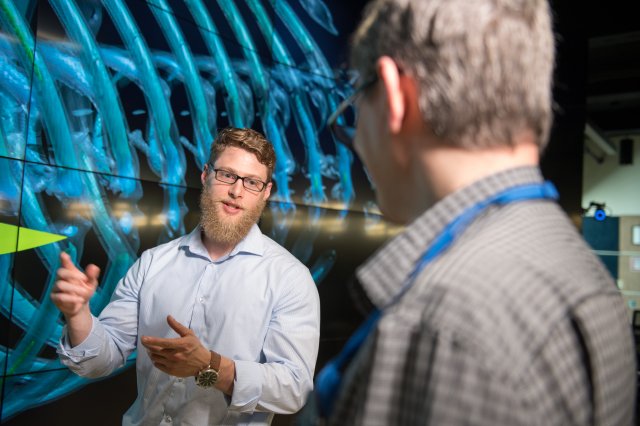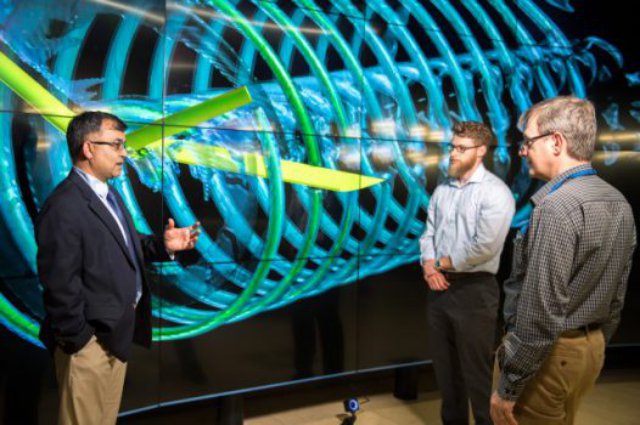Uber and U.S. Army Research, Development and Engineering Command, Army Research Lab, announced today a Cooperative Research and Development Agreement, or CRADA, establishing an ongoing plan to partner around developing and testing the vehicles used in Uber’s proposed urban aviation ride-share network.
As part of this agreement, Uber and RDECOM ARL also signed their first joint work statement to jointly fund and collaborate on research development of rotor technology. Officials announced the agreement and work statement at the second Uber Elevate Summit in Los Angeles, May 8, 2018.
The joint work statement focuses on research to create the first usable stacked co-rotating rotors or propellers; this is a concept for having two rotor systems placed on top of each other and rotating in the same direction.
Initial experimentation of this concept has revealed the potential for stacked co-rotating rotors be significantly quieter than traditional paired rotor approaches and improve performance for a flying craft. To date, stacked co-rotating rotors have not been deployed in existing flying craft.
Under this first joint work statement, Uber and the Army’s research lab expect to spend a combined total of $1 million in funding for this research; this funding will be divided equally between each party.

Army Research Laboratory post-doctoral fellow Ethan Corle discusses the future of aviation during a research meeting at the DOD Supercomputing Resource Center at Aberdeen Proving Ground, Maryland. (Army photos by David McNally)
The CRADA allows for additional joint work statements in other aligned research areas. Uber and Army will continue to explore future developments in this sphere.
“This agreement with Uber displays the Army utilizing innovative approaches to collaborate with an industry partner that is truly on the cutting edge,” said Dr. Jaret Riddick, director of the ARL’s Vehicle Technology Directorate. “This collaboration is an opportunity to access years of knowledge vested in subject matter experts within the lab. It will allow the Army to rapidly advance mutually beneficial technology to inform objectives for silent and efficient VTOL, or vertical takeoff and landing operation, for the next generation fleet of Army unmanned air vehicles. This supports the Army modernization priorities for future vertical lift aircraft.”
“Uber is proud to be partnering with ARL on critical research on flying vehicle innovations that will help create the world’s first urban aviation rideshare network,” said Eric Allison, Head of Uber Elevate. “Our first jointly-funded project will help us develop first of its kind rotor technology that will allow for quieter and more efficient travel. We see this initial project as the first of many and look forward to continued collaboration with the lab on innovations that will make uberAIR a reality.”
Uber will also collaborate with Launchpoint Technologies Inc., a technology company focused on the modeling, design optimization, and fabrication of novel electric motors. LaunchPoint’s design approach will lead to motors best suited to power eVTOL technology with stacked co-rotating propellers. In the future, all three entities will exploit the experimental data and lessons learned from stacked co-rotating rotor testing. The result will be more predictive models and higher-performing next generation co-rotating propellers.
Dave Paden, President of LaunchPoint Technologies, expressed his enthusiasm for the project — “LaunchPoint’s engineering team is excited to engage with Uber and ARL in this challenging and meaningful endeavor. The transformation of air transportation is right around the corner and collaborations like this are essential to developing the enabling these technologies.”
Last year, Uber announced the first U.S. Elevate cities would be Dallas-Fort Worth/Frisco Texas and Los Angeles, with a goal of flight demonstrations in 2020 and Elevate commercially available to riders in 2023 in those cities.
To make uberAIR a reality, Uber has entered into partnerships with several highly experienced aircraft manufacturers who are developing electric VTOL vehicles including: Aurora Flight Sciences (now a subsidiary of Boeing), Pipistrel Aircraft, Embraer and Bell. Uber’s design model specifies that this fully electric vehicle have a cruising speed between 150-200 mph, a cruising altitude of 1000-200 feet and be able to do trips of up to 60 miles on a single charge.
Last fall, Uber signed a space act agreement with NASA for the development of new unmanned traffic management concepts and unmanned aerial systems that will enable safe and efficient operations at low altitudes. To help create skyports for the uberAIR network, Uber has also entered into real estate partnerships with Hillwood Properties and Sandstone Properties.
Source: Press Release

